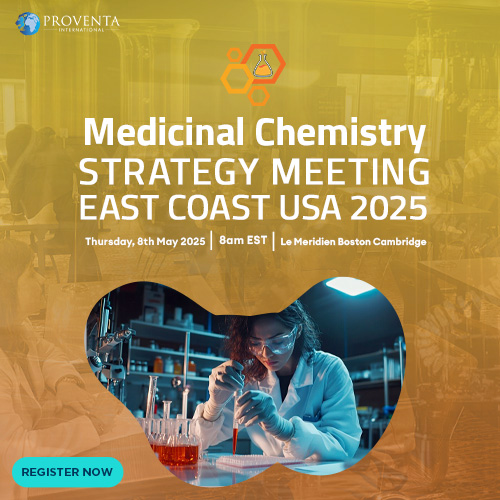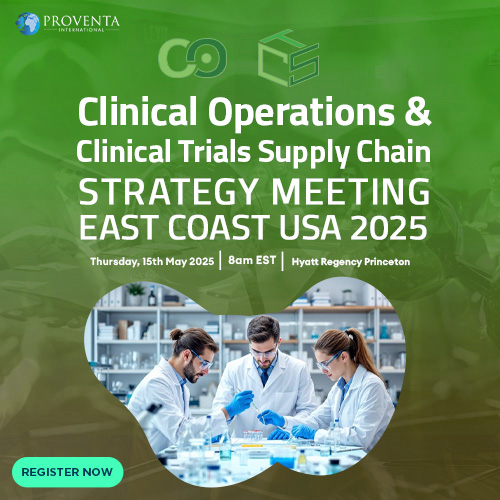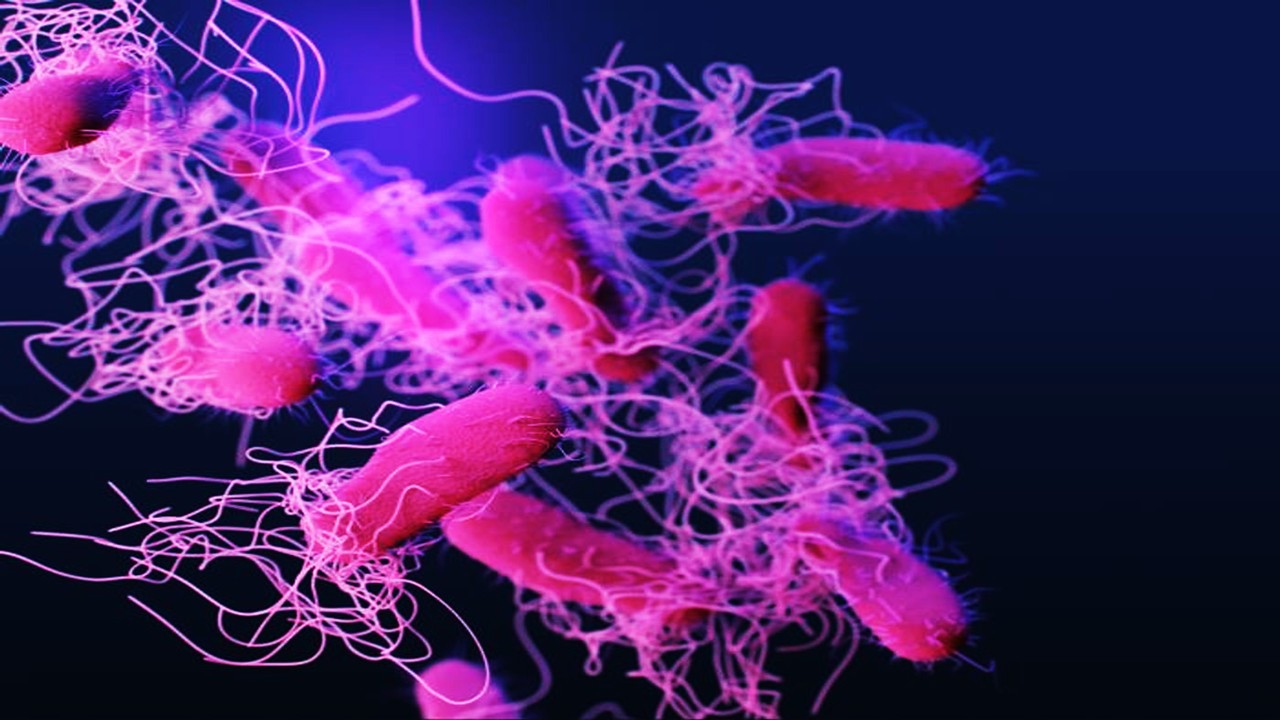The Rising Threat of Antimicrobial Resistance
The relentless evolution of bacterial resistance has rendered many conventional antibiotics ineffective, pushing researchers toward unconventional therapeutic strategies. Among these, membrane-disrupting agents—particularly macrocyclic peptides—have emerged as promising candidates due to their unique mechanism of action. Unlike traditional antibiotics that target intracellular processes, these compounds physically compromise bacterial membranes, leaving pathogens with fewer evolutionary escape routes. This approach minimizes the likelihood of resistance development, a critical advantage in an era of multidrug-resistant superbugs. The urgency to develop such alternatives cannot be overstated, as the pipeline for novel antibiotics has stagnated while resistance continues to escalate.
Macrocyclic peptides, with their rigid, ring-shaped structures, exhibit exceptional stability and binding affinity, making them ideal for membrane interaction. Their amphipathic nature allows them to integrate into lipid bilayers, disrupting structural integrity and inducing cell lysis. This direct physical assault bypasses the need for intracellular targets, which bacteria often modify to evade drugs. Researchers emphasize that this mechanism is less prone to resistance because mutations altering membrane composition are far more detrimental to bacterial survival than enzymatic changes. The growing body of preclinical data suggests that these peptides could redefine infection treatment paradigms.
Despite their promise, developing membrane-disrupting agents is not without challenges. Bacterial membranes vary widely in composition, requiring peptides to be fine-tuned for specific pathogens. Additionally, host toxicity remains a concern, as eukaryotic cells also rely on intact membranes. However, advances in peptide engineering have allowed scientists to enhance selectivity, reducing off-target effects. Some synthetic macrocyclic peptides now demonstrate preferential binding to bacterial over mammalian membranes, a crucial step toward clinical viability. The field is rapidly evolving, with several candidates already in preclinical and early clinical trials.
The scientific community has responded enthusiastically to these developments, recognizing their potential to circumvent resistance mechanisms that have thwarted other drugs. Experts argue that membrane disruptors could serve as both standalone therapies and adjuvants, revitalizing older antibiotics by weakening bacterial defenses. This combinatorial approach may extend the lifespan of existing drugs while providing new weapons against resistant strains. The integration of computational modeling and high-throughput screening has accelerated the discovery of optimized peptides, shortening development timelines significantly.
Looking ahead, the translation of macrocyclic peptides into clinical use will depend on overcoming pharmacokinetic hurdles, such as proteolytic degradation and poor bioavailability. Innovations in formulation, including liposomal encapsulation and chemical modifications, are being explored to enhance stability and delivery. If successful, these agents could mark a turning point in antimicrobial therapy, offering a sustainable solution to a crisis that has long been deemed insurmountable. The next decade will be pivotal in determining whether membrane-disrupting peptides can deliver on their preclinical promise.
The Structural Brilliance of Macrocyclic Peptides
Macrocyclic peptides derive their potency from their constrained, ring-shaped architecture, which confers remarkable stability and target specificity. Unlike linear peptides, their cyclic structure prevents rapid enzymatic degradation, prolonging their therapeutic activity. This rigidity also enables precise spatial orientation of functional groups, optimizing interactions with bacterial membranes. The amphipathic nature of these peptides—combining hydrophobic and hydrophilic regions—facilitates insertion into lipid bilayers, where they exert their disruptive effects. Such properties make them superior to many small-molecule antibiotics in terms of durability and mechanism.
The design of macrocyclic peptides often draws inspiration from natural host defense peptides, which have evolved over millennia to combat microbial invaders. However, synthetic optimization allows for enhanced potency and reduced toxicity. Computational tools now enable researchers to predict how subtle modifications in amino acid sequences influence membrane affinity and selectivity. For instance, increasing the proportion of cationic residues can improve binding to negatively charged bacterial membranes while sparing neutral mammalian cells. These refinements are critical for developing clinically viable candidates with minimal side effects.
Recent breakthroughs in peptide chemistry have expanded the repertoire of macrocyclic structures, including stapled, bicyclic, and threaded variants. Stapled peptides, reinforced by synthetic cross-linkers, exhibit even greater resistance to proteolysis and improved membrane penetration. Bicyclic peptides, with their dual-ring systems, offer additional binding sites for enhanced specificity. These innovations underscore the versatility of peptide-based therapeutics, positioning them as adaptable tools against diverse pathogens. The ability to engineer these molecules with atomic precision sets them apart from traditional antibiotics.
Despite their synthetic advantages, macrocyclic peptides face challenges in large-scale production. Their complex structures often require laborious solid-phase synthesis or recombinant expression, driving up costs. However, advances in automated peptide synthesis and bioengineering are gradually lowering these barriers. Some researchers are exploring hybrid approaches, combining peptide synthesis with microbial fermentation to streamline manufacturing. As these technologies mature, the scalability of macrocyclic peptides will improve, making them more accessible for widespread use.
The structural ingenuity of macrocyclic peptides underscores their potential as next-generation antimicrobials. By marrying the specificity of biologics with the robustness of small molecules, they represent a unique class of membrane disruptors. Ongoing research aims to further refine their pharmacodynamic properties, ensuring they meet the stringent demands of clinical application. If successful, these molecules could herald a new era in infectious disease treatment, one where resistance is no longer an inevitable outcome.
Mechanisms of Membrane Disruption: A Physical Assault on Pathogens
The bactericidal action of macrocyclic peptides hinges on their ability to compromise microbial membrane integrity, a lethal blow that leaves little room for evolutionary evasion. These peptides employ a multi-faceted approach, first attaching to the bacterial surface via electrostatic interactions with negatively charged phospholipids. Once anchored, their hydrophobic domains embed into the lipid bilayer, destabilizing its architecture. This insertion induces pore formation, ion leakage, and ultimately, osmotic collapse—catastrophic for bacterial survival. Unlike enzymatic inhibitors, which pathogens can circumvent through single-point mutations, membrane disruption presents a high evolutionary barrier. Altering membrane composition is far more physiologically taxing for bacteria, making resistance less likely to emerge.
Different classes of macrocyclic peptides exhibit distinct modes of membrane interaction. Some, like the polymyxin-inspired compounds, act as detergents, solubilizing lipids and causing wholesale membrane disintegration. Others, such as the defensin-mimicking peptides, form structured pores that selectively permit ion efflux while maintaining partial membrane integrity. The diversity in mechanisms allows for tailored therapeutic strategies depending on the pathogen’s membrane properties. Gram-negative bacteria, with their outer lipopolysaccharide layer, require peptides capable of penetrating this formidable barrier, whereas Gram-positive species, lacking this shield, are more vulnerable to direct disruption.
Recent structural studies have revealed that some macrocyclic peptides induce lipid clustering, creating phase separations that destabilize membrane fluidity. This phenomenon, known as “lipid segregation,” leads to microdomain formation, impairing essential membrane functions such as respiration and nutrient transport. Advanced imaging techniques, including cryo-electron microscopy and atomic force microscopy, have captured these disruptions in real time, providing unprecedented insights into their kinetics. Researchers note that the speed of membrane lysis often correlates with peptide concentration, suggesting a threshold-dependent mechanism that could be optimized for clinical dosing.
A critical advantage of membrane-targeting peptides is their ability to eradicate persister cells—dormant bacterial subpopulations that evade conventional antibiotics. These metabolically inactive cells are notoriously resistant to drugs that rely on intracellular activity, but their membranes remain vulnerable. Macrocyclic peptides, by acting independently of bacterial metabolism, can eliminate these stubborn reservoirs, reducing relapse rates in chronic infections. This property is particularly valuable in treating biofilm-associated infections, where persisters contribute significantly to therapeutic failure.
Despite these strengths, membrane disruption is not universally lethal—some bacteria possess adaptive mechanisms, such as membrane remodeling or efflux pumps, to mitigate damage. However, these defenses often come at a fitness cost, slowing bacterial growth and increasing susceptibility to immune clearance. Combining membrane disruptors with traditional antibiotics could exploit this vulnerability, creating synergistic effects that overwhelm pathogen defenses. Such strategies are already being explored in preclinical models, with encouraging results against multidrug-resistant strains.
Overcoming the Toxicity Hurdle: Selective Targeting of Bacterial Membranes
One of the foremost challenges in developing macrocyclic peptides as therapeutics is ensuring they spare human cells while effectively killing bacteria. Eukaryotic membranes, rich in cholesterol and zwitterionic phospholipids, differ significantly from their bacterial counterparts, which are dominated by anionic lipids. This divergence provides a biochemical basis for selectivity, but achieving it in practice requires meticulous peptide engineering. Researchers have found that modulating hydrophobicity, charge distribution, and conformational rigidity can fine-tune specificity, minimizing off-target cytotoxicity.
Host defense peptides, such as human cathelicidins, have served as blueprints for designing selective macrocyclic analogs. Natural peptides often exhibit broad-spectrum activity but with undesirable hemolytic effects. By systematically altering their sequences—replacing certain residues with non-natural amino acids or introducing stabilizing motifs—scientists have created derivatives with improved therapeutic indices. For instance, reducing overall hydrophobicity decreases interactions with cholesterol-rich mammalian membranes, while maintaining sufficient amphipathicity for bacterial targeting. Such optimizations have yielded peptides with minimal toxicity in animal models.
Another strategy involves leveraging structural motifs that specifically recognize bacterial membrane components. Certain macrocyclic peptides bind lipid A, a Gram-negative-specific glycolipid, or lipoteichoic acids found in Gram-positive walls. This molecular “address system” ensures the peptides localize preferentially to pathogens. Computational docking studies have been instrumental in identifying these interactions, enabling rational design of next-generation variants with enhanced discrimination. Some experimental peptides now demonstrate near-complete selectivity, lysing bacteria at concentrations that leave human cells unharmed.
Delivery systems further enhance selectivity by concentrating peptides at infection sites. Nanoparticle encapsulation, for example, can shield peptides from premature degradation while facilitating targeted release in bacterial microenvironments. Acid-sensitive linkers have been employed to trigger peptide activation only in the low-pH conditions typical of abscesses or intracellular infections. These innovations not only improve safety but also enhance potency, ensuring maximal antimicrobial effect where it is most needed.
Clinical translation will depend on rigorous toxicology profiling, particularly for chronic or systemic infections. Early-phase trials of membrane-disrupting peptides have reported manageable adverse effects, primarily mild irritation at administration sites. However, long-term studies are needed to rule out potential immunogenicity or organ-specific toxicity. If these hurdles are cleared, macrocyclic peptides could become a mainstay in treating resistant infections, offering a precision strike against pathogens without collateral damage to the host.
The Challenge of Drug Delivery: Optimizing Macrocyclic Peptides for Clinical Use
Despite their potent antimicrobial effects, macrocyclic peptides face significant pharmacokinetic hurdles that must be overcome before widespread clinical adoption. Their relatively large molecular weight and polar structures often result in poor oral bioavailability, rapid renal clearance, and susceptibility to proteolytic degradation. Researchers are exploring multiple strategies to enhance their stability and tissue penetration, including backbone modifications, conjugation to carrier molecules, and advanced formulation technologies.
One promising approach involves the incorporation of non-natural amino acids or D-enantiomers, which resist enzymatic breakdown while maintaining antimicrobial activity. Cyclization itself already confers some protection against exopeptidases, but further stabilization through hydrocarbon “stapling” or disulfide bridging has shown improved plasma half-lives in animal models. Some modified peptides now demonstrate sufficient stability for intravenous or even subcutaneous administration, a critical step toward practical therapeutic use.
Nanotechnology-based delivery systems are also being leveraged to improve pharmacokinetics. Liposomal encapsulation, for instance, shields peptides from degradation while allowing controlled release at infection sites. Polymeric nanoparticles functionalized with targeting moieties can further enhance accumulation in infected tissues, reducing systemic exposure and potential toxicity. These carrier systems not only prolong circulation time but can also enhance membrane disruption by delivering high local concentrations of peptides directly to bacterial colonies.
Another innovative strategy involves the development of prodrug versions of macrocyclic peptides. By masking charged groups with cleavable moieties, researchers can improve intestinal absorption for oral delivery, with the active peptide being released upon exposure to bacterial enzymes or specific physiological conditions. This approach could potentially expand treatment options to outpatient settings, where oral administration is strongly preferred.
As these delivery technologies mature, they must be balanced against manufacturing complexity and cost considerations. The field is increasingly adopting platform approaches where a single delivery system can be adapted for multiple peptide candidates, streamlining development. With continued optimization, macrocyclic peptides may soon overcome their delivery limitations to realize their full potential as next-generation antimicrobials.
Synergistic Potential: Combining Membrane Disruptors with Conventional Antibiotics
The unique mechanism of macrocyclic peptides makes them particularly attractive as combination therapy partners with traditional antibiotics. By compromising bacterial membrane integrity, these peptides can enhance the intracellular penetration of other drugs that would normally be excluded by efflux pumps or poor membrane permeability. This synergistic approach not only improves efficacy but may also help prevent resistance development by attacking pathogens through multiple mechanisms simultaneously.
Experimental studies have demonstrated that sub-lethal concentrations of membrane-disrupting peptides can sensitize resistant bacteria to antibiotics previously rendered ineffective. For example, certain macrocyclic compounds have been shown to restore susceptibility to last-resort drugs like colistin in extensively drug-resistant Gram-negative pathogens. This effect appears to result from both physical disruption of the outer membrane and downregulation of efflux pump expression in response to membrane stress.
The timing and sequencing of combination treatments may prove critical to their success. Some research suggests that pretreatment with membrane disruptors followed by conventional antibiotics yields better outcomes than simultaneous administration. This “priming” approach allows the peptides to sufficiently weaken bacterial defenses before antibiotic exposure, maximizing intracellular drug accumulation. Such nuanced treatment protocols will require careful clinical evaluation to determine optimal dosing regimens.
Beyond enhancing existing antibiotics, macrocyclic peptides may also synergize with other novel antimicrobial modalities. Early data indicates potential benefits when combining them with phage therapy, as membrane damage can facilitate phage entry and replication. Similarly, pairing with antimicrobial peptides that target intracellular processes could create a devastating one-two punch against resistant pathogens. These multifaceted approaches mirror successful combination strategies used in oncology and HIV treatment, where targeting multiple pathways simultaneously has proven highly effective.
As resistance mechanisms continue to evolve, the ability to rationally design synergistic combinations will become increasingly valuable. Macrocyclic peptides, with their membrane-targeting action, represent a versatile component in these combination arsenals. Future treatment paradigms may involve personalized combination regimens tailored to specific resistance profiles, with membrane disruptors serving as force multipliers for other antimicrobial agents.
Beyond Antibiotics: Additional Therapeutic Applications of Membrane-Disrupting Peptides
While the primary focus of macrocyclic peptide development has been antimicrobial applications, their unique properties suggest potential utility across multiple therapeutic areas. The same membrane-interacting capabilities that make them effective against bacteria could be harnessed for antiviral, anticancer, and immunomodulatory purposes, opening exciting new avenues for drug development.
In antiviral therapy, some macrocyclic peptides have shown activity against enveloped viruses like HIV and herpes simplex. By targeting the lipid bilayer of viral envelopes, these peptides can prevent viral entry or cause direct virion inactivation. Unlike traditional antivirals that target viral proteins (which mutate rapidly), membrane disruption presents a higher barrier to resistance development. This approach may be particularly valuable for emerging viruses where traditional drug development lags behind outbreak timelines.
The oncology field has also taken interest in membrane-disrupting peptides as potential anticancer agents. Many cancer cells exhibit distinct membrane compositions compared to healthy cells, including increased anionic phospholipid exposure. Macrocyclic peptides can be designed to selectively target these differences, inducing cancer cell lysis while sparing normal tissues. Some variants are being explored as components of antibody-drug conjugates, where they could provide a potent payload with a novel mechanism of action.
Immunomodulation represents another promising application area. Certain host-defense peptide analogs have demonstrated ability to neutralize bacterial endotoxins while modulating inflammatory responses. This dual activity could be valuable in treating sepsis, where both pathogen clearance and inflammation control are critical. Additionally, some membrane-interacting peptides appear to have vaccine adjuvant properties, potentially enhancing immune responses to co-administered antigens.
As the understanding of peptide-membrane interactions deepens, so too will the range of potential applications. The coming years may see membrane-disrupting macrocycles emerge as versatile therapeutic platforms, with tailored variants developed for specific disease indications. This expansion beyond traditional antimicrobial use could significantly increase the commercial viability and therapeutic impact of these fascinating molecules.
The Road Ahead: Challenges and Opportunities in Clinical Translation
The transition of macrocyclic peptides from promising research compounds to clinically approved therapeutics faces several key challenges that must be addressed. While preclinical data are encouraging, the path to regulatory approval requires rigorous demonstration of safety, efficacy, and manufacturing consistency at scale. Each of these areas presents unique hurdles that the field must overcome to realize the full potential of these membrane-disrupting agents.
Manufacturing complexity remains a significant barrier, as the production of uniform, high-quality macrocyclic peptides requires specialized expertise and infrastructure. Unlike small molecule drugs that can be synthesized through conventional chemical processes, these larger structures often demand hybrid approaches combining solid-phase peptide synthesis with enzymatic cyclization or other post-translational modifications. Advances in continuous manufacturing and quality control analytics will be essential to ensure batch-to-batch consistency as production scales up.
Regulatory pathways for these novel antimicrobials also require careful navigation. As biologics with a physical (rather than traditional pharmacological) mechanism of action, they may not fit neatly into existing antibiotic development frameworks. Agencies like the FDA and EMA are working to adapt their guidelines for these new modalities, but sponsors will need to engage early and often to define appropriate endpoints and trial designs. The unique resistance profile of membrane disruptors may justify accelerated approval pathways, provided safety can be adequately demonstrated.
Economic considerations cannot be ignored in antimicrobial development. The traditional antibiotic business model struggles to provide sufficient return on investment, discouraging pharmaceutical company participation. Alternative models, including public-private partnerships and “pull” incentives like extended market exclusivity, may be necessary to spur development of macrocyclic peptide antibiotics. Their potential utility across multiple indications (including non-antibiotic uses) could improve the commercial calculus for developers.
Looking forward, the next five to ten years will be critical for determining whether macrocyclic peptides can fulfill their early promise. With several candidates now entering clinical trials, the field will soon have concrete data on real-world performance in human patients. Success could usher in a new class of antimicrobials and establish membrane disruption as a validated therapeutic strategy, while failure might necessitate a reevaluation of approach. Regardless of outcome, the lessons learned will undoubtedly advance the broader field of peptide therapeutics and antimicrobial development.
The scientific community remains cautiously optimistic that these challenges can be overcome. As resistance pressures mount and traditional antibiotic discovery platforms continue to disappoint, the need for innovative approaches has never been greater. Macrocyclic peptides, with their unique combination of potency, selectivity, and resistance-evasive mechanisms, represent one of the most promising avenues in the ongoing battle against antimicrobial resistance. Their ultimate success will depend on sustained investment, interdisciplinary collaboration, and creative problem-solving across all stages of development.
Engr. Dex Marco Tiu Guibelondo, B.Sc. Pharm, R.Ph., B.Sc. CpE
Editor-in-Chief, PharmaFEATURES

Subscribe
to get our
LATEST NEWS
Related Posts

Drug Discovery Biology
Democratizing Mass Spectrometry: The Automation Revolution Unlocking Precision Measurement
Automation simplifies workflows and enables new experiments with mass spec’s unmatched specificity.

Drug Discovery Biology
Flycode Revolution: How Tiny Tags Are Accelerating Antibody Drug Discovery
What began as a clever repurposing of Drosophila biology has matured into a platform technology transforming how therapeutic proteins are discovered, optimized, and manufactured.
Read More Articles
Pathogenic Targeting 5.0: The Rise of RNA Therapeutics and Peptide-Based Drugs in Modern Medicine
Unlike traditional small-molecule drugs, which interact with proteins, RNA therapies modulate gene expression directly, enabling interventions at the root of disease.
Chemical Gale: How Wind Energy is Reshaping Industrial Manufacturing
The integration of wind energy into chemical manufacturing constitutes a fundamental reimagining of process chemistry.













